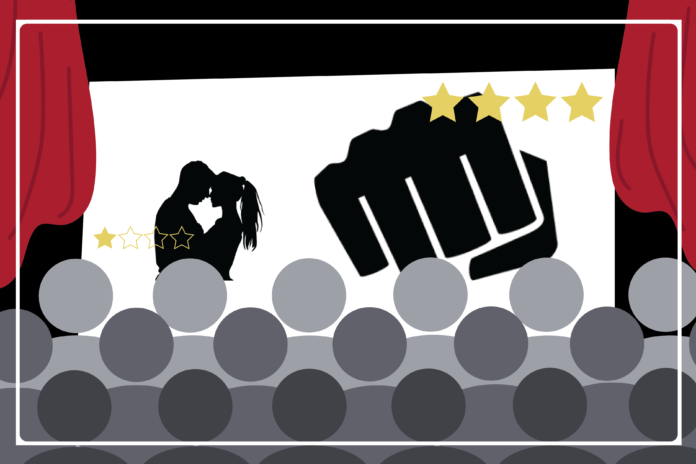Originally implemented as a precautionary measure for children, it may be more harmful than it appears at first glance
By CLARA FISCHER — arts@theaggie.org
One of the defining moments of the transition from teenage-dom to adulthood is your first time seeing a movie that is out of your age-approved guidelines — the great leap from PG to PG-13 and the even bigger jump from PG-13 to R. However, I’ve always harbored a certain suspicion about these seemingly arbitrary ratings.
As it turns out, these moral guidelines of Hollywood are determined “via a board comprised of an independent group of parents” that are meant to represent how the average U.S. parent would judge a film. Upon trying to find further information on the exact logistics of this board, I was effectively led in circles on the Motion Picture Association’s website, which did not serve to cease my musings.
My curiosity was spiked even further when I went to see “Don’t Worry Darling” this past week. I absolutely cannot handle horror, and so I was a little nervous to dive into an R-rated thriller right away. When reading the rating beforehand, I was a bit soothed by what I saw — yes, it was rated R, but it appeared that the actual violence and gore was going to be marginal compared to the level of suggestive content and foul language — all of the categories were rated “moderate,” suggesting that there wouldn’t be anything too frightening beyond the boundaries of a slightly revealing nightgown.
What I actually found, however, was that I had to peek from behind my hands for the majority of the movie because of the violent imagery that is occurring on the screen. Without getting into too much detail about this specific movie, there are multiple instances of upsetting physical violence, suicide attempts, electroshock therapy and more that I personally wouldn’t deem suitable for all audiences.
What really took me by surprise, though, was the sheer imbalance between sexual and violent content where both of them were deemed “moderate” by the parental board. Sure, there’s one sex scene and a few steamy kisses, but the amount of genuinely graphic imagery far outweights these scenes, and doesn’t seem equivalent enough to put them on the same playing field.
“Don’t Worry Darling” is only one of the examples of this somewhat common phenomenon. Having a biased ranking system like this impacts how U.S. society consumes media; it’s become commonplace for all movies that want a shot at commercial success to volunteer themselves for review. By representing such an immense and diverse group of people, those determining these rankings are placing themselves in a position of almost unchecked power.
Movies have the power to hugely impact the economy, social norms and almost everything else that makes our society what it is. Having a system that is dictated by what appears to be almost puritan ideals demeaning sex-positivity and promoting conservative values does not accurately represent the diverse zeitgeist of the U.S. in a satisfactory manner (even though the country still does see many of these values influencing other aspects of the culture.)
There has been plenty of discussion about the potentially harmful effects of purity culture, including in conversations around sexual assualt and the patriarchy. While the issue of a movie-rating system may not top the list in order of importance for promoting these things, revisiting the way we consume our entertainment could be a critical step forward.
Written by: Clara Fischer — arts@theaggie.org






